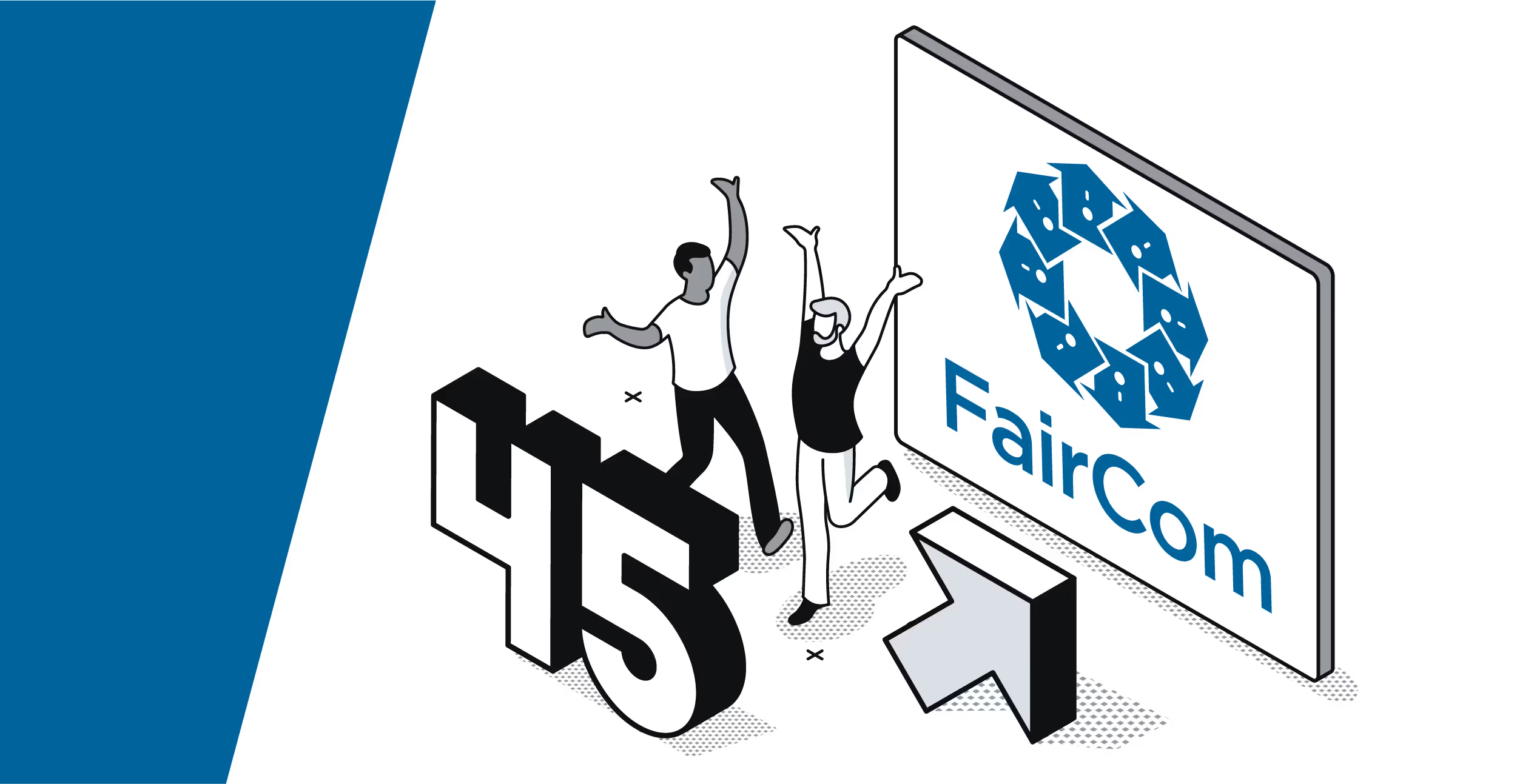FairCom offers the most effective and efficient solution for COBOL systems
Looking for the most cost-effective and time-efficient way to modernize a non-mainframe COBOL system? You're not alone. Many companies, aware of the enormous savings on the operational side and the revenue-enhancing opportunities on the profit side, are looking for better ways to modernize a non-mainframe COBOL system.
Enter FairCom RTG. Not only does RTG save money on licensing costs, but it also offers enormous savings by cutting down on the amount of time spent on modernization, meaning fewer development costs and greater resources to put toward other company objectives. Plus, by modernizing faster than the competing approaches, companies that utilize RTG realize savings from not experiencing unnecessary outages or downtime, which are typical of riskier and more complex modernization approaches like rewriting or porting.
Sound too good to be true?
It does, but the solution is real. The secret is that RTG enables companies to modernize without touching a single line of COBOL code. This is because we understand that COBOL is not the problem. The problem is with the data.
We handle the data problems, letting your COBOL systems integrate easily with modern languages and systems. RTG allows you to access your live COBOL data files through many different interfaces besides your own COBOL program, simultaneously. With the power of SQL, you can use ADO.NET, JDBC, ODBC, Python, PHP, and many others to query your data files. RTG offers a full COBOL file system and a powerful, dynamic database server that maps all COBOL files into data tables, including support for REDEFINES and multiple keys.
How does FairCom's modernization compare with others?
For many, modernization means rewriting the COBOL code (also known as the language-focused approach). Rewriting essentially means starting from scratch and should be approached with extreme caution. Rewriting code is also highly susceptible to run-away costs, huge amounts of time spent, and a likelihood you will not succeed on your first attempt.
It's also important to consider the time it would take for the new system to stabilize, as all new v1.0 systems need mileage to become dependable.
FairCom recognized that an existing COBOL application is well-established and proven in the field over many years. We considered it highly inefficient to rewrite the application, as doing so would result in the loss of stability and introduce unknown amounts of new bugs and problems that could take years to resolve. This is one of the main reasons we developed RTG, to give developers an option to avoid this opportunity cost.
Examples of modernization approaches, as told in dollars and cents
- Commonwealth Bank of Australia's modernization project resulted in $749.9 million spent during a five-year period to replace its core COBOL system.
- A study of 10 insurance companies that migrated from their legacy systems. The average was more than $10 million spent in a period of more than three years for each company. The lowest dollar amount reported was $3 million.
- The New York Times tried twice to modernize a COBOL legacy system. The first attempt failed after four years of effort. The second attempt was successful but completed a year behind schedule.
One common denominator in all these use cases is the massive amounts of code involved. The modernization efforts for insurance companies involved millions of lines of legacy code, with the smallest amount reported by one of these companies being 500,000. The project(s) at The New York Times involved more than 2 million lines of code.
FairCom provides the ability to modernize your COBOL system without dealing with the code, saving as much as 80 percent of what it would cost you if you rewrote (replaced) COBOL; in addition, RTG modernizes in a fraction of the time migration takes. Additionally, FairCom ProServices provide expert assistance to experienced developers to create a custom solution for their business' use case.
Focusing on the data means we don’t have to take the "big-bang" approach: Files can be converted and made accessible as you need, allowing you to modernize per modules, rather than as a turn-key solution. In addition to cost and time savings in the short term, our customers receive a robust, dynamic system that extends the life of their COBOL system and lowers their total cost of ownership because the modernized COBOL system is still intact but now can be maintained and updated with modern languages.




